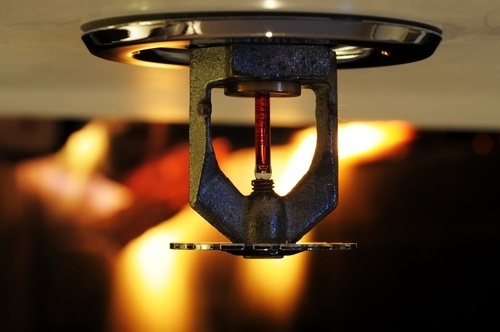Fire sprinklers act immediately when flames are still small, protecting your building and minimizing damage.
Only sprinklers directly above the fire activate. Your furniture and appliances are safe from water damage.
We optimize the sprinkler layout to reduce costs and simplify maintenance, while offering full coverage for your building.

Local Law 26 of 2004 made automatic sprinklers mandatory for many properties in New York City, including high-rise office buildings. LL26/04 was published in response to the 9/11 incident, with the goal of making buildings more resistant to fire. Nearby Engineers has ample experience designing sprinkler systems according to NYC building codes and Local Law 26. This ensures a quick project approval.
We are one of the fastest growing MEP design firms in the construction industry. We pride ourselves on having a fast turnaround while providing cost effective solutions. We are licensed in 50 states and are your one stop shop for all MEP design needs.
We are licensed in all 50 states!
We design to the perfection
Enjoy our lightening fast turnaround
We have completed so far!
Our designs are approved by DOB in one go
The best service experience in the market
Local Law 26 of 2004 made automatic sprinklers mandatory for many properties in New York City, including high-rise office buildings. LL26/04 was published in response to the 9/11 incident, with the goal of making buildings more resistant to fire.
LL26 introduced many fire protection measures, but the most demanding requirement was making fire sprinklers mandatory for many existing buildings. Since installing sprinklers in a large building is a considerable investment, LL26 provided a 15-year deadline. All buildings covered by the law were required to have automatic sprinklers by July 1, 2019.
The NYC Department of Buildings published a Summary of Provisions for Local Law 26 of 2004. There are prospective requirements that only affect new constructions, and retroactive requirements that affect existing buildings as well - installing fire sprinklers was among the retroactive requirements.
Local Law 26 does not mandate the installation of fire sprinklers for all properties in NYC. The measure is only required in buildings that meet both of the following conditions:
Note that occupancy groups have been redefined since 2004. Group E now refers to education, which is different from the Group E defined in LL26. However, automatic sprinklers are recommended even in buildings where they are not mandatory. In addition to providing effective fire protection, sprinklers make buildings eligible for better insurance plans.
There is a common misconception that fire sprinklers shower an entire building with water at the first sign of smoke or fire. This wrong idea has been spread by movies and TV series, but it can make building owners skeptical about installing fire sprinklers. In real-life applications, many fires are stopped by a single sprinkler head.
Deluge-type sprinkler systems work like those in the movies, releasing water over an entire area when fire or smoke are detected. However, these sprinkler systems are only used in fire-sensitive applications, not in commercial buildings.
An automatic sprinkler system can cost up to $10 per square foot of building area. However, the project cost can be reduced with an optimal sprinkler head layout and smart design decisions. In new projects, fire protection engineers can collaborate with architects and interior designers to achieve full coverage of your building with the smallest possible number of sprinkler heads.
Fire sprinklers offer benefits for building owners, even if the property never suffers a fire incident in its entire service life. As previously mentioned, buildings become eligible for better insurance plans when they are equipped with automatic sprinklers. Effective fire protection systems also provide a marketing advantage for real estate developers - the additional safety can help convince a potential tenant to sign a lease.
Before proceeding with a fire sprinkler installation, consider the following requirements:
Nearby EngineersNew York Engineers has ample experience designing sprinkler systems according to NYC building codes and Local Law 26. This ensures a quick project approval.
The New York City Fire Department (FDNY) provides the following definition of an Emergency Action Plan:
“A written plan which sets forth the circumstances and procedures for the sheltering in place, in-building relocation, partial evacuation or evacuation of building occupants in response to an emergency.”
Local Law 26 of 2004 requires an Emergency Action Plan for buildings under the Business Group E classification, as defined in 2004, if they meet any of the following conditions:
There are also special cases where the NYC Department of Buildings requires an Emergency Action Plan for public safety reasons, even if the building does not meet the conditions above.
382 NE 191st St , Suite 49674
Miami, Florida 33179276 5th Avenue, Suite 704 #904
New York, NY 10001